With all the question about heating coops, and or heating vs ventilation discussions, let me share what I have done, with good results. First off, my coop is a classic 12' by 32' shed roof coop probably built from some Dept. of Agriculture bulletin 50 years ago. It was in pretty rough shape, after several years of neglect, when we bought. After getting it back in shape, and putting birds in it for the first time in many years, every thing seemed to be going well. As we approached winter here in Ohio, and kept the coop windows closed more I started seeing signs of too much moisture in the coop. Ended up having to keep windows cracked open all winter long. Read as much I could find on the subject of ventilation that winter, and came up with this.
First thing I did was cut a hole in the peak of the roof and mount a whirlygig type turbine vent. Directly below the vent I built a plywood "duct" inside the coop that reached from roof to about 10" off the coop floor.
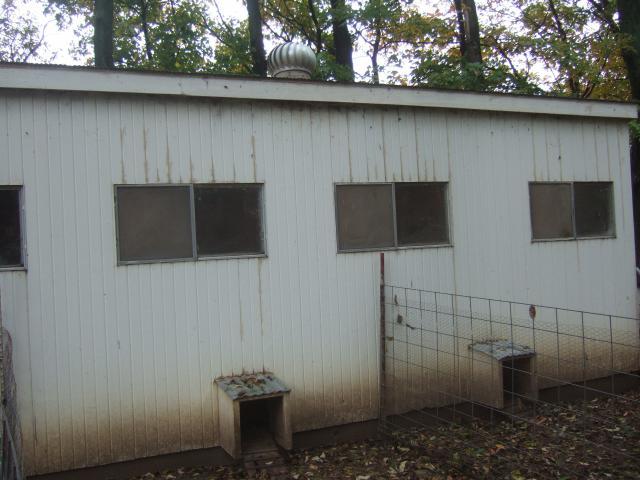
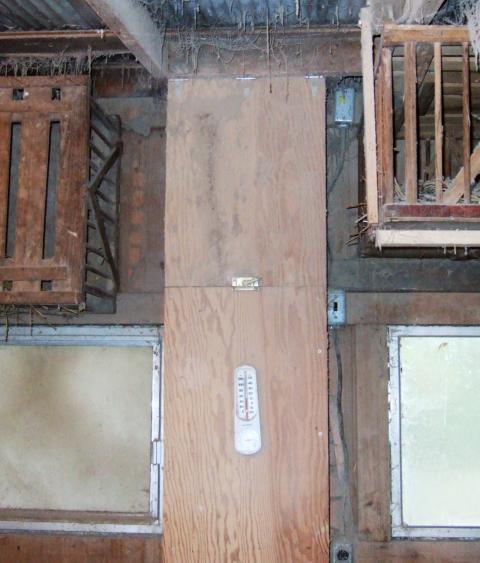
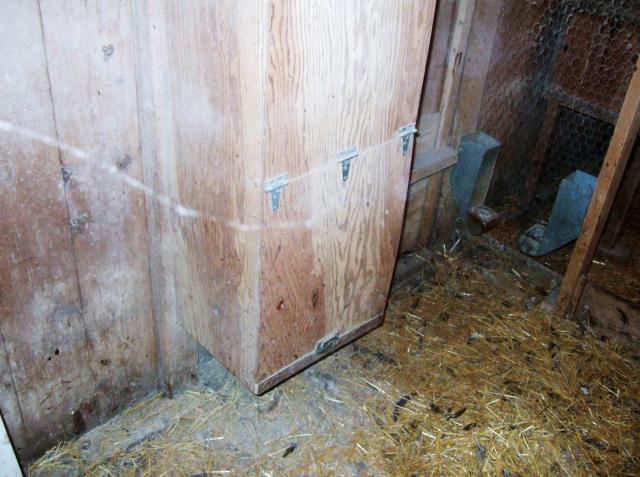
I put a openable flap on the duct as high as possible, which when open would draw the hot summer air near the roof out. When closed would draw the colder winter air near the floor, while allowing any accumilating body heat to remain in the coop. This worked well on windy days but did not move enough air on most days, so I gave it a boost by mounting a removable fan right below the turbine vent for warm weather. I lucked onto a attic fan at a garage sale and mounted it down near the bottom (with the top fan removed and upper flap closed) for winter.
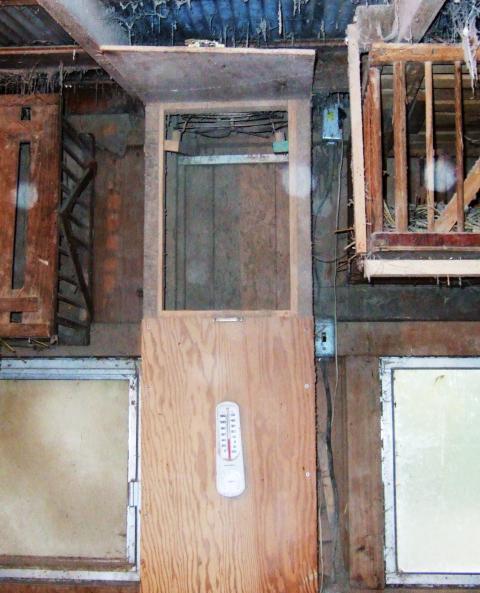
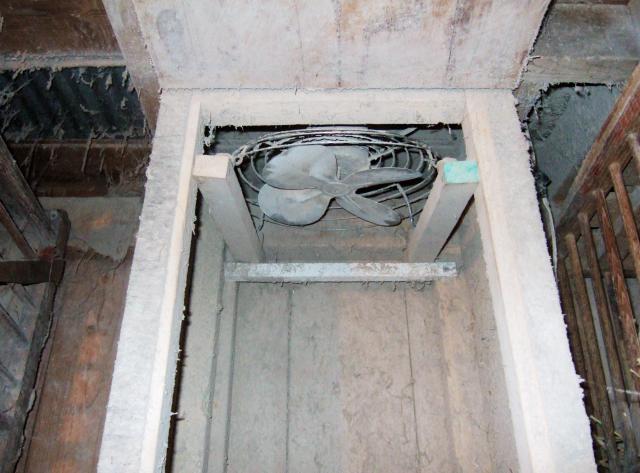
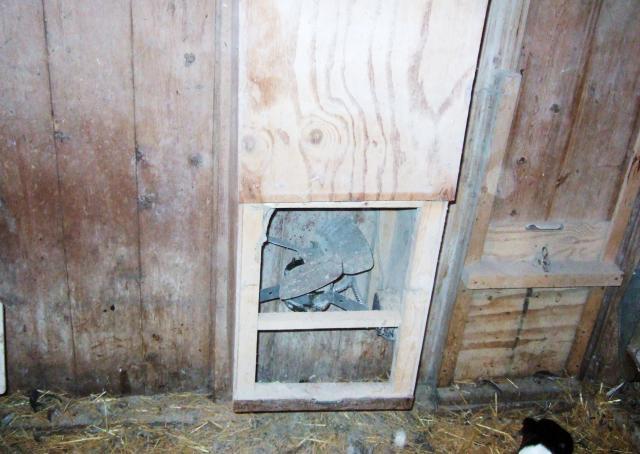
This improved things considerably. Allows good air exchange while keeping it noticably warmer than outside temp. in winter.
For fresh air intake I mounted modified dryer vents high along the back wall, being carefull not to put them above the roosts.
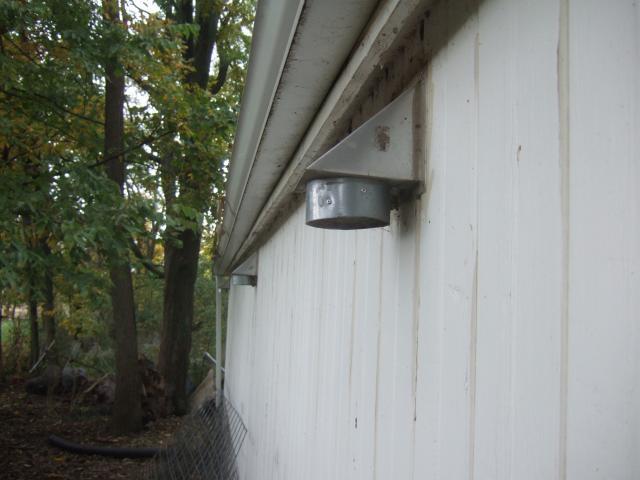
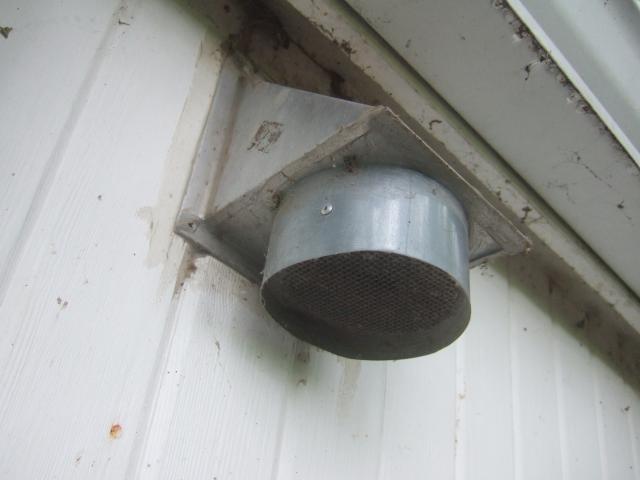
First thing I did was cut a hole in the peak of the roof and mount a whirlygig type turbine vent. Directly below the vent I built a plywood "duct" inside the coop that reached from roof to about 10" off the coop floor.



I put a openable flap on the duct as high as possible, which when open would draw the hot summer air near the roof out. When closed would draw the colder winter air near the floor, while allowing any accumilating body heat to remain in the coop. This worked well on windy days but did not move enough air on most days, so I gave it a boost by mounting a removable fan right below the turbine vent for warm weather. I lucked onto a attic fan at a garage sale and mounted it down near the bottom (with the top fan removed and upper flap closed) for winter.



This improved things considerably. Allows good air exchange while keeping it noticably warmer than outside temp. in winter.
For fresh air intake I mounted modified dryer vents high along the back wall, being carefull not to put them above the roosts.





